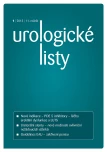Patient preferences for advanced urological techniques: A guide to future surgical developments?
Authors:
A. Rao; M. Anwar; M. Rashid; I. Ahmed; N. P. Cohen; S. Mcclinton; B. K. Somani
Published in:
Urol List 2013; 11(1): 50-54
Overview
Introduction:
Two novel minimally invasive surgical techniques, Natural Orifice Transluminal Endoscopic Surgery (NOTES) and Laparo Endoscopic Single Site Surgery (LESS) are undergoing rapid development to reduce complications historically associated with open surgery. Our study aimed to analyse Scottish public preferences regarding these new surgical techniques in the hope that this would help inform future development and resource allocation in urological surgery.
Materials and method:
A questionnaire based survey was carried out with members of the general public in North East Scotland. The survey consisted of four questions about surgery in two hypothetical scenarios of kidney disease, and was designed to identify whether the concepts of innovative techniques were acceptable to the general population.
Results:
A total of 500 participants took part in the study from a wide variety of social backgrounds. 59% and 47.4% of participants would accept LESS or NOTES for kidney cancer and non-functioning kidney hypothetical scenarios respectively. LESS was highest ranked option (rank mean value 2.0 (kidney tumour) and 1.89 (non-functioning kidney)).
Conclusion:
Of the newer surgical techniques, LESS was more preferred than NOTES. The general public more readily accepted the concept of LESS as it was seen as a further development of previously established laparoscopic surgical techniques.
Key words:
LESS, NOTES, laparoscopic, nephrectomy
Sources
1. Tracy RC, Raman JD, Cadeddu JA et al. Laparoendoscopic single – site surgery in urology: where have we been and where are we heading? Nat Clin Pract Urol 2008; 5(10): 562–567.
2. Kalloo NA, Singh KV, Jagannath BS et al. Flexible transgastric peritoneoscopy: a novel approach to diagnostic and therapeutic interventions in the peritoneal cavity. Gastrointest Endosc 2001; 60(1): 114–116.
3. Canes D, Desai MM, Aron M et al. Transumbilical Single-Port Surgery: Evolution and Current Status. Eur Urol 2008; 54(5): 1020–1030.
4. Lima E, Rolanda C, Correia-Pinto J. Transvesical Endoscopic Peritoneoscopy: Intra-abdominal Scarless Surgery for Urologic Applications. Curr Urol Rep 2008; 9(1): 50–54.
5. Baron HT. Natural orifice transluminal endoscopic surgery. Br J Surg 2007; 94(1): 1–2.
6. Rao A, Kynaston J, MacDonald ER et al. Patient preferences for surgical techniques: should we invest in new approaches? Surg Endosc 2010; 24(12): 3016–3025.
7. Katsuno G, Fukunaga M, Nagakari K et al. Single-incision laparoscopic colectomy for colon cancer: early experience with 31 cases. Dis Colon Rectum 2011; 54(6): 705–710.
8. Lee DG, Baek M, Ju SH et al. Laparoendoscopic Single-Site Nephrectomy for Single-System Ectopic Ureters with Dysplastic Kidneys in Children: Early Experience. J Laparoendosc Adv Surg Tech A 2011; 21(5): 461–465.
9. Dardamanis D, Theodorou D, Theodoropoulos G et al. Transanal polypectomy using single incision laparoscopic instruments. World J Gastrointest Surg 2011; 3(4): 56–58.
10. Cho YB, Park CM, Chun HK et al. Transvaginal endoscopic cholecystectomy using a simple magnetic traction system. Minim Invasive Ther Allied Technol 2011; 20(3): 174–178.
11. Ahmed I, Cook J, McCormack K et al. Single Port Laparoscopic Surgery Compared With Standard 3 Port Laparoscopic Surgery For Appendicectomy. A Pilot Study For A Randomised Controlled Trial: SCARLESS-P (Single Centre Appendicectomy RCT: Laparoscopic Vs Endoscopic Single-Port Surgery-Pilot). http://public. ukcrn.org.uk/search/StudyDetail.aspx?StudyID=9282. UKCRN 2010.
12. Gill IS, Canes D, Aron M et al. Single port transumbilical (E-NOTES) nephrectomy. J Urol 2008; 180(2): 637–641.
Labels
Paediatric urologist UrologyArticle was published in
Urological Journal

2013 Issue 1
Most read in this issue
- Varicocele and the signification of its repair
- EAU Guidelines on penile curvature
- A review of current practices and controversies in the use of indwelling ureteric stents
- Tadalafil in the treatment of LUTS/BPH and ED
